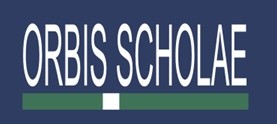Pohledy na výuku fyziky na 2. stupni základní školy: souhrnné výsledky CPV videostudie fyziky
Physics teaching in lower secondary school: main results of the CPV Video Study
Author(s): Tomáš Janík, Marcela Janíková, Petr Najvar, Veronika NajvarováSubject(s): Social Sciences
Published by: Univerzita Karlova v Praze, Nakladatelství Karolinum
Keywords: lesson phases; modes of classroom organisation; opportunities to learn; opportunities to talk; video stud; physics teaching; aims of teaching Physics: didactic tools and media; teacher’s implicit theo
Summary/Abstract: The paper presents the methodology and main results of the CPV Video Study of Physics project, which were collected between 2004 and 2007. The following topics are adressed: 1) modes of classroom organisation; 2) phases of instruction; 3) coincidences of modes of classroom organisation and instructional phases; 4) didactic tools and media; 5) opportunities to talk; 6) teacher beliefs concerning the aims of teaching physics. The findings show that physics teaching is controlled by the teacher and little space is allowed for individual and group activities. The teacher mainly communicates with the students by means of monologue, dictation or dialogue. When phases of teaching are concerned, practising and application are typically employed, while motivation or metacognition based phases appear rather rarely. Modern didactic media are also employed very rarely. Teachers mainly use the blackboard and they do so during all phases of the lesson. Textbooks were used in less then 50 percent of lessons that were analysed. They were approached as the source of information and tasks that were read aloud or copied. The most important goal in physics instruction according to teachers is improving pupils’ awareness of the signifi cance of physics for understanding every day problems and basic physical concepts and principles. Concerning achieving teaching goals we mostly identifi ed explicit work with goals whereas the category of “goals” is in most cases matched with the category of “content”. Teachers scarcely referred to achieving the goals that would enhance reflection and awareness of a learning situation of pupils.
Journal: Orbis scholae
- Issue Year: 2/2008
- Issue No: 1
- Page Range: 29-52
- Page Count: 24
- Language: Czech

